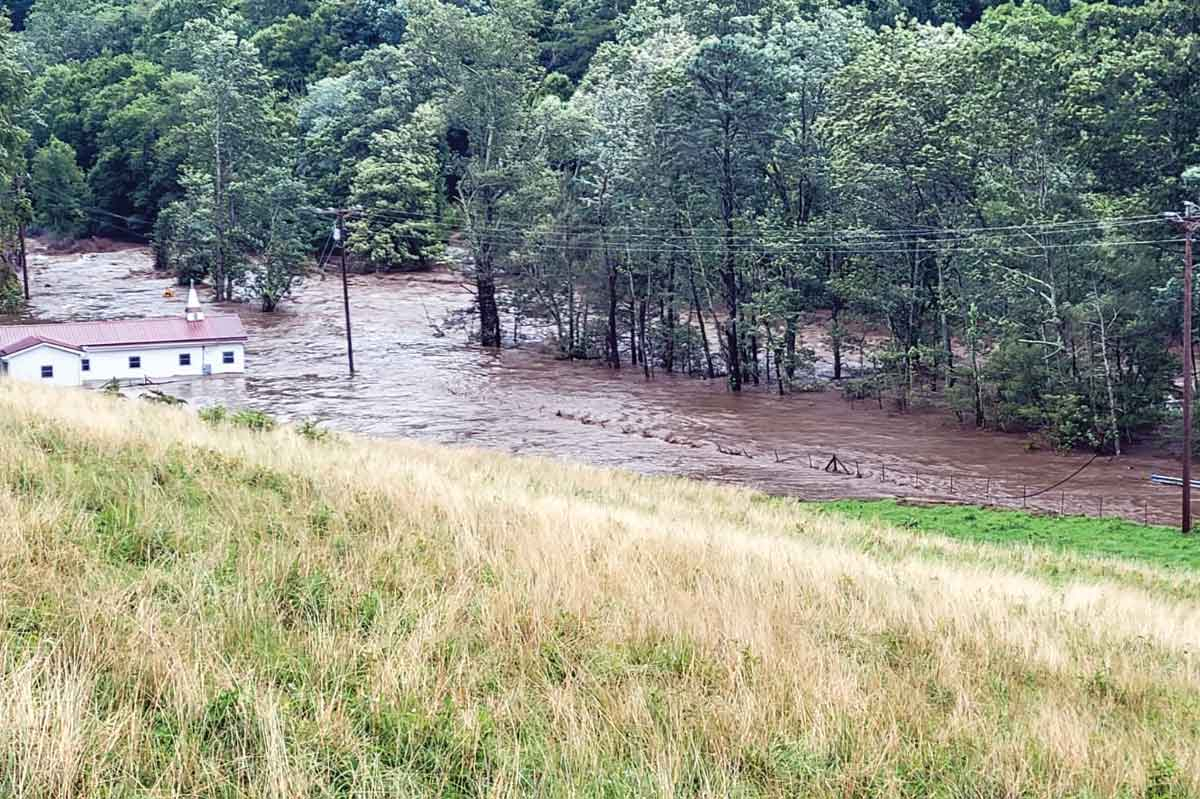Emergency watershed protection coming to East Fork
 The consequences of deadly flooding in Haywood County in 2021 are still being felt. File photo
The consequences of deadly flooding in Haywood County in 2021 are still being felt. File photo
Asheville-based McGill Associates will begin work to provide emergency watershed protection in areas affected by Tropical Storm Fred after Haywood commissioners approved an $800,000 contract on Jan. 17, but at least one commissioner thinks it may not be enough.
“I’ve seen this process step along from the time Tropical Storm Fred hit, and there’s been probably thousands of man-hours of walking those creeks and trying to get money allocated, and there’s going to be a shortfall,” said Jennifer Best, a Haywood commissioner who also serves as a supervisor on the Haywood County Soil and Water Conservation Board. “It’s not going to get it all done, but it’s going make a big improvement in what’s happened up there.”
In August 2021, the remnants of Tropical Storm Fred dumped incredible amounts of rainfall on Haywood County in a short period of time, causing millions in damages to hundreds of homes, bridges and roads, while also killing six people.
In some areas, snags and debris remain troublesome almost 18 months later.
The total timeline for the debris removal and stream stabilization project across 57 sites could be as long as 24 months and will be divided into eight segments.
Access coordination and research will take at least two months as McGill gathers a list of properties that have been impacted and then creates a GIS database and maps. Title searches and ownership verification will also be conducted, along with executed right of entry forms.
Related Items
The design and permitting stage will take between nine and 12 months. After that, McGill will draft bid documents and contracts and administer the process, fast-tracking the easiest sites.
“We plan to take the low-hanging fruit, the sites that are pretty self-explanatory and don’t have a lot of permitting issues,” said Mark Cathey, regional manager for McGill. “And then the sites that have some complications, stream restoration components or stabilization components. Most of this is stabilization, not restoration.”
Commissioner Tommy Long said he was concerned about obstacles that could reduce water flow and contribute to future flooding.
“A lot of people had many cubic yards of stone outside the river channel, and the river channel changed, and it’s now dry land,” Long said.
Cathey estimated that roughly 20 sites require stabilization, and that material will be moved at those sites. That work will be subject to a competitive bid process; Cathey said McGill was aware of local resources and that there were regional or national firms that can perform the work, but Long wanted to be sure local contractors were aware of the forthcoming bid opportunities.
“Our plan is to cast a wide net,” said County Manager Bryan Morehead.
Morehead added that the work was being divided into small groups so that multiple, smaller contractors could have a chance to perform the work, as opposed to designating one big project with 57 sites that could probably only be handled by large firms that aren’t local.
Engaging multiple contractors will also speed the work along, rather than relying on just one.
“We’ve designed it to allow them to bid and be competitive, we think, and that’s our goal, to keep as much money local as possible,” Morehead said.
McGill has plenty of experience on projects of this type. The firm removed debris along approximately 13,000 linear feet for the city of Wilmington after Hurricane Florence, and also conducted operations over 50 miles of impacted streams, affecting more than 250 properties in Cumberland County.
Most significantly, McGill was involved with this same type of project back when tropical storms Frances and Ivan decimated Haywood County in 2004. Cathey was the day-to-day manager on that project.
The $800,000 in county funding is reimbursable through state and federal sources.









